New Bettie Page Clothing Line Puts Fresh Spin on 50’s Playsuits
Holly Ellison, designer for Bettie Page by Coral & Jade, and vintage fashion blogger for BettiePage.com, offers a quick history lesson on the playsuits that inspired her designs for the 2016 line.
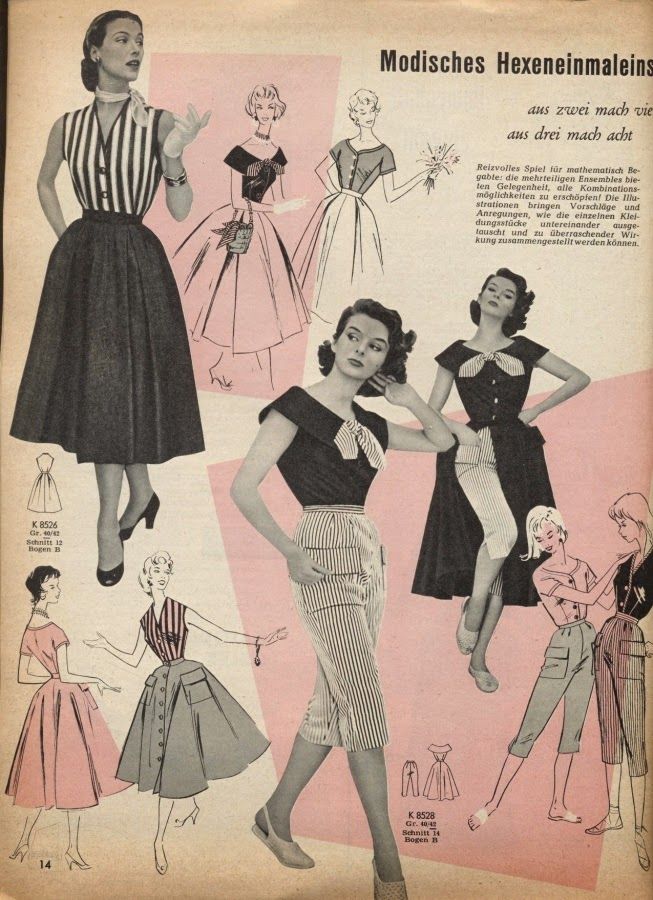
1955 Playsuits
Playsuits emerged in New York in the 1930’s as a less restrictive leisure outfit for the outdoors or light sportswear. Gaining popularity in the 1940’s, many women adopted this look in a variety of prints, most often worn at the beach or poolside. Its true fashion potential didn’t peak, however, until the 1950’s when it was glamourized as a stylish summer outfit, featured on the covers of fashion magazines of the day, such as l’Officiel and Women’s Own, accessorized with full brim hats. Playsuits were often made out of plain weave, natural fiber fabrics–usually a cotton or a rayon. A majority of the fabrics were printed in fun, whimsical prints, stripes and plaids, ditsy florals or tropical prints.
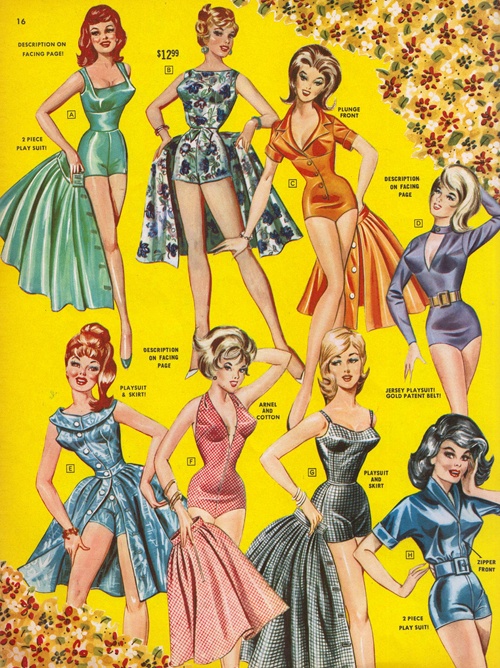
Frederick’s of Hollywood playsuits
The Playsuit can be interpreted as a variety of clothing silhouettes since it is more of a set-type styling than single item of clothing. It is defined by its head-to-toe completed look. The main silhouette of the playsuit is a one-piece–or as we call it today, a romper. The top would either have buttons or smocking on the back or sides. Often this style had a defined waist that extended into loose, wide-leg shorts hitting at about mid-thigh. Some shorts were even fuller, with the help of pleats or gathers, to resemble more of a faux-flounce skirt look. However, the short leg was also sometime styled as a “bloomer” fit. The volume in this look would be controlled at the leg, constructed with gathers, pleats or elastic to create the “puffed” look. Some even had functioning or purely decorative ties. The bloomer fit was also popular in swimwear for an easy fit around the bottom and thigh. For rompers or swimsuits, matching capes were another accessory that completed the look.
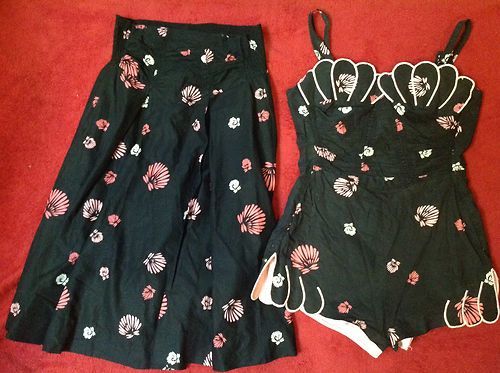
1950’s DeWeese playsuit set
Other variations included a two-piece, separated look. The set was usually made in matching materials but sometimes was just color-coordinated, with one half being solid and the other being printed. For the top, a more casual beach look included a crop bra top or halter. For a more conservative look, a button-down sleeveless blouse–with princess seams or fisheye darts–or a smocked peasant blouse worked as well. The tops were paired with simple matching shorts or capris. Sometimes the bottom might feature coordinating piping or buttons to tie in the look more.
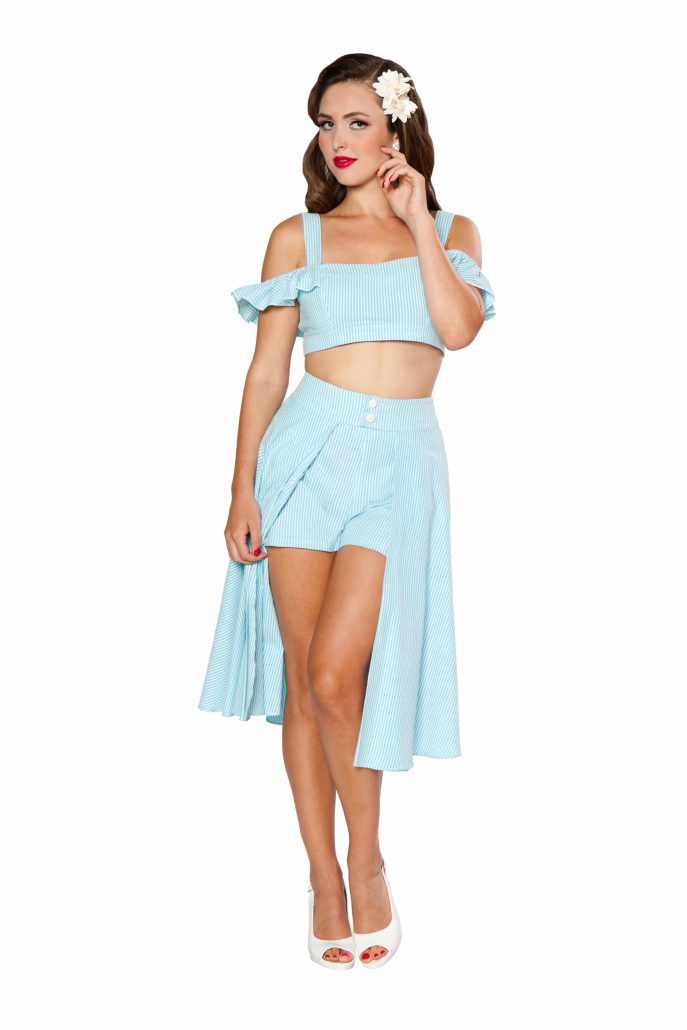
Playsuit from Bettie Page Clothing 2016 line
Almost each set included a matching overskirt since shorts were usually considered too revealing for public places. It would be worn over the shorts and was usually always longer, almost hiding the appearance of the bottom layer. The length could hit anywhere between the low thigh to the below the knee. This allowed the wearer to go about her day comfortably for some shopping or a lunch date, only to easily transition to or from the beach. The skirt’s construction was usually a full, dirndl style, gathered into a waistband. The closure was usually buttons that could extend the full length of the skirt, or in other cases, it was a simple wrap with a self-tie. The skirts were often embellished with ruffles or large pockets.
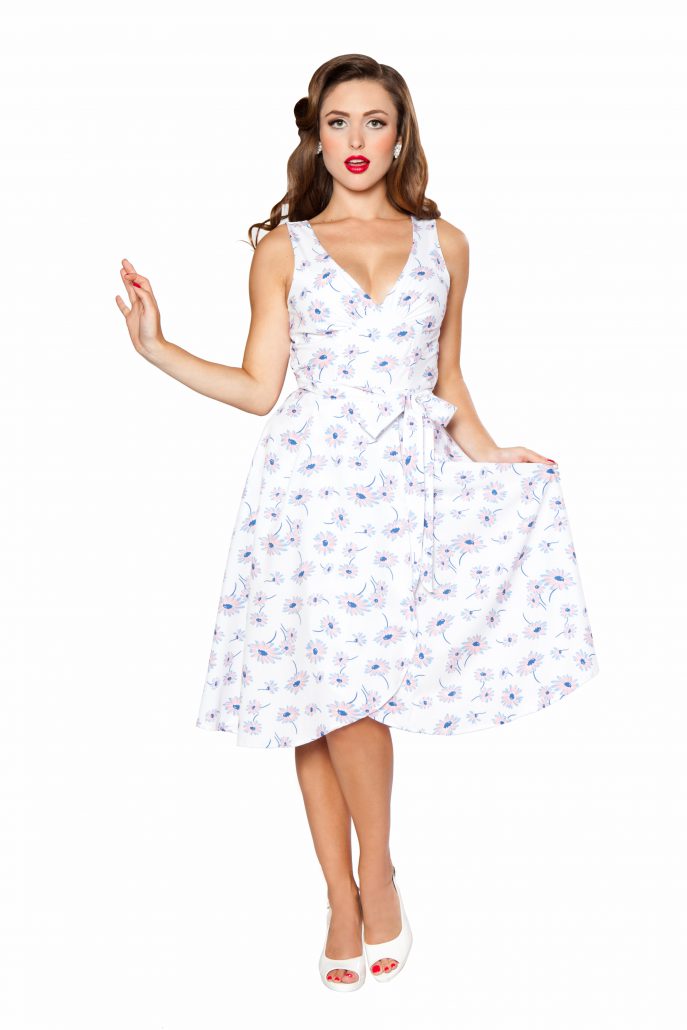
Another playsuit from Bettie Page Clothing 2016 line, part 1
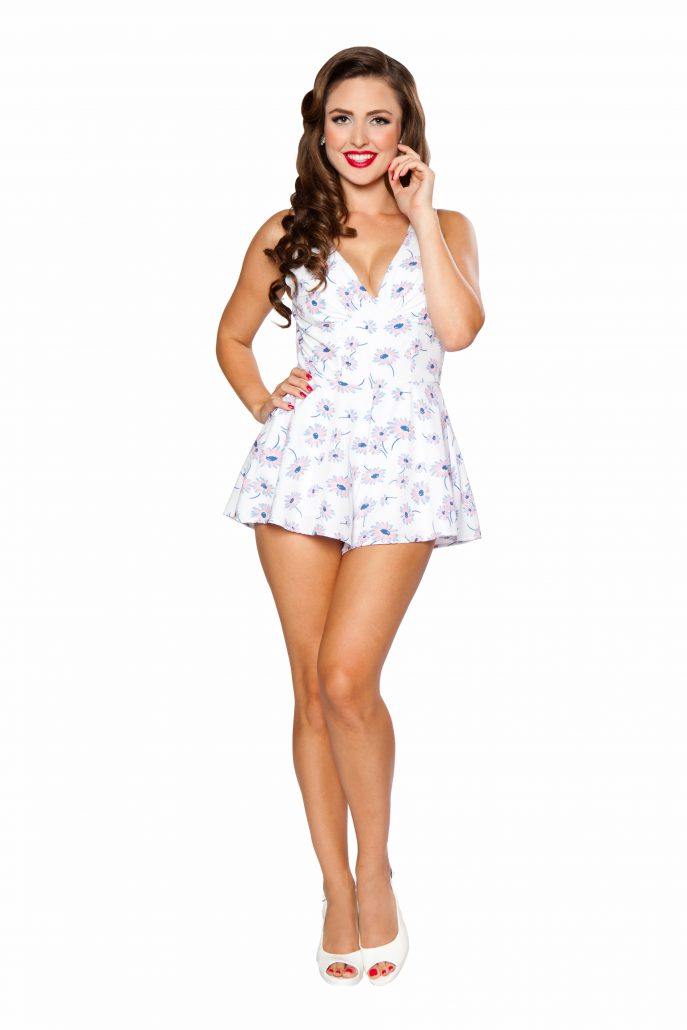
Another playsuit from Bettie Page Clothing 2016 line, part 2
Another version was called a “shortall,” similar to an overall, minus the front bib and with longer suspender-type straps. Popularized in the 1940’s, this look was designed to be worn with a blouse or a comfy T-shirt. These were made with more bottom weight fabrics such as twills, denims or heavy fabrics.



Leave a Reply
Want to join the discussion?Feel free to contribute!